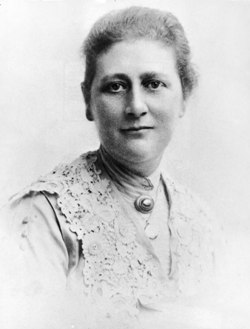As geologist and science writer Nina Morgan discovers, the shorter the name, the more memorable the character.
 Picture: Beatrix Potter (1866-1943): scientist manqué?
Picture: Beatrix Potter (1866-1943): scientist manqué?
In the 19th Century, the study of natural history captured the imaginations of many women, partly to relieve the boredom associated with the lives of the affluent, and partly because it provided a welcome freedom, allowing women to get out into the fresh air on their own. Although they were forbidden to present the fruits of their research in person to the learned societies, many women – for example, Etheldred Benett (1776 – 1845) and Mary Anning (1799-1847) – became known as experts in their own right.
CHILDREN’S BOOKS
For Beatrix Potter (1866-1943), best known today for her charming children's books featuring cuddly creatures, the study of natural history offered a welcome opportunity to get out, alone, and escape from the attentions of an overbearing mother. Possessed of an observer's eye and natural artistic talent, Potter was attracted by many aspects of natural history, including botany, entomology, ornithology and mycology. She produced a number of impressive watercolour illustrations of fungi by the time she was 21.
Then, while enjoying a family holiday at a rented house near Coldstream in the Scottish Borders in 1894, she developed an interest in geology. She soon went on to acquire copies of James Geikie's Outlines of Geology and Andrew Ramsay's The Physical Geology and Geography of Great Britain.
SAND PITS
Although at Coldstream she visited stone pits and examined signs of past glacial activity, it was fossils that became her particular passion. She enjoyed fossil hunting on family holidays at seaside towns in Dorset, Devon and Cornwall as well as in the Borders country. And in 1895, while on holiday in the Lake District, she overcame her reservations about the dangers of quarries and quarrymen and visited quarries above Troutbeck to collect and illustrate fossil corals. These are now preserved as paintings. But a visit to a potentially unstable quarry in Swanage a year later seems to have put her off, and she decided that it "was better not to expect or worry much about geology...".
Fear of injury may not have been the only reason Potter decided to give up on geology. Although she was interested in fossils mainly as collectable objects, rather than subjects for a systematic study, she still wanted to identify and learn their names. And this was where she hit the proverbial rock wall. After spending a frustrating day in the Natural History Museum trying to identify and discover the scientific names for her fossil specimens she began to wonder "whether geology names the fossils, or the fossils geology".
And with this, she may have had a point. Fossil names like Parapallaseakytodermogammarus abyssalis or Gammaracanthuskytodermogammarus lobricatobaicalensis could be enough to put anyone off. No wonder when she began writing her books for children she plumped for simpler names for her characters - like Peter!
Acknowledgement
The idea for this vignette came from the article titled: A scientist's eye, by Linda Lear, Nature, vol 508, 24 April 2014, pp 454-455. Further information came from Beatrix Potter: The extraordinary life of a Victorian genius by Linda Lear (ISBN 978-0-141-00310-8) and the Wikipedia entry for Beatrix Potter. David Martill of the University of Southampton, Darren Naish of the University of Portsmith, and Philip Powell of the Oxford University Museum of Natural History kindly provided information about unusual fossil names.
- If the past is the key to your present interests, why not join the History of Geology Group (HOGG). For more information and to read the latest HOGG Newsletter, visit the HOGG website at: www.historyofgeologygroup.co.uk, where you'll also find abstracts for the talks and posters presented at the Conference on Geological Collectors and Collecting, April 2011 available free to download as a pdf file.
*Nina Morgan is a geologist and science writer based near Oxford.